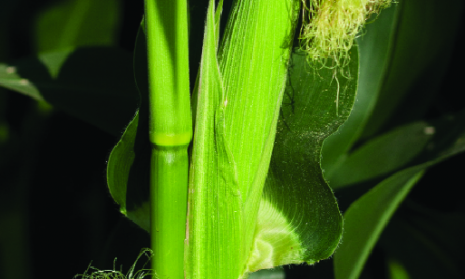In defence of GM crops

Elsewhere in this journal (pages 60-67), we make a critique of the article by Dr Helen Wallace (Wallace, 2013), in which she argues strongly that GM crops are both unnecessary and harmful in various ways.
Dr Wallace has herself responded to this criticism (pages 68-69) and the editors have kindly allowed us to provide an initial reaction, on which we hope to expand in the next edition of World Agriculture.
The negative picture painted by Dr Wallace does not appear to be consistent with the fact of continued steady growth in the penetration of GM crops in both industrialised and developing countries, with the area planted in developing countries now being more than half the global total.
Unless farmers are being deliberately mis-sold unsuitable crop cultivars by unscrupulous merchants and are in some way prevented from sowing conventionalcultivars in subsequent years, it is hard to avoid the conclusion that the majority of farmers are getting benefits which outweigh both the higher seed cost and any negative impacts there may be.
Some of her specific criticisms, which we intend to address more fully in the next edition, are addressed below:
1. ‘…GM farming is in crisis as resistant weeds have become widespread…’ Inevitably, some weeds develop resistance to particular herbicides and it is hardly surprising that this is also the case with glyphosate. There were already some resistant species prior to the widespread use of Roundup Ready™ crops – glyphosate having already become one of the most popular broad-spectrum herbicides – and further resistance will have occurred with continued use. Resistant weeds can be controlled either with alternative herbicide or by hoeing and this situation represents the reality of farming rather than a crisis.
2. Dr Wallace compares US farming unfavourably with Europe, but farm management practices, crops and climatic conditions are not easily comparable. She also argues that a choice to revert to non-GM seeds has been made more difficult by the consolidation of the seed industry and the lack of diversity. However, there are still plenty of non-GM cultivars available to both conventional and organic farmers and it would be normal for any supplier to be able to propagate larger quantities of particular cultivars over only a few seasons if sufficient demand existed. The reduced range of cultivars is more likely to reflect changing patterns of demand than vice versa.
3. According to the critique of our paper, ‘conventional breeding… has in fact delivered more crop improvements much faster and more cheaply’. We would not argue that non-GM techniques can produce commercial cultivars more quickly and cheaply. Partly, this is a consequence of the greater regulatory demands on transgenic cultivars and partly that only a handful of companies have the in-depth technical resources to use rDNA techniques and successfully bring transgenic cultivars to market. Nevertheless, despite the barriers, companies continue to develop GM cultivars because they simply cannot use conventional techniques to introduce the same traits. We therefore stand by our description of GM as ‘cutting edge technology’. In addition, we regard this as an extremely useful new weapon in the armoury rather than in any way being a replacement for other breeding techniques.
4. We also consider our use of the terms ‘innocuous to human health’ and ‘environmentally benign’ to describe glyphosate to be justified. This does mean it is incapable of causing harm, simply that when glyphosate is used according to instructions there is a large margin of safety. Many active ingredients of commercial herbicides have some environmental impact. A scientific risk assessment allows any potential problems to be identified and managed. Identifying potential mechanisms for harm, or having concerns, is not the same as providing evidence or demonstrating harm in the environment.
5. The issue of habitat loss for the Monarch butterfly and other species is not one to be taken lightly. Nevertheless, it is fair to point out that, although farmed fields are themselves relatively poor in wildlife, overall farmland management itself provides many useful habitats. It seems to us that the criticism is largely one of modern intensive farming rather than GM crops per se. The other side of the coin is that greater productivity on current arable land reduces the pressure on other natural habitats; pressure on a particular iconic species is not the same as an overall regional reduction in biodiversity.
6. We are criticised for underestimating the impact of Bt expression. As for any pesticide, some development of resistance over time is inevitable and this is simply a continuation of a struggle between farming and pests, which is effectively an ‘arms race’. The situation is analogous to the use of antibiotics, which have been of enormous benefit but whose efficacy is now suffering from widespread microbial resistance. The answer is to develop new solutions rather than decry the negative impacts of existing ones. Similarly, the criticism is levelled that secondary pests have become more of a problem with the reduction in numbers of the target species. Again, this is an expected problem and illustrates that no single control method is perfect but must often be combined with others as the farmers’ needs change.
7. We take issue with the assertion that there is no scientific consensus on the safety of GM crops. In itself, this is an unscientific statement, since all we can say is that there is no additional hazard introduced by the particular GM events currently in the marketplace.
Consumers of course have every right to choose which foods they eat, and the choice to avoid GM for ethical reasons is easily accommodated by buying organic food.
These are our first views of the criticisms and we will provide a more reasoned response at a later date.
Reference
Wallace, Helen. (2013) World Agriculture, 4, 1, 45-49. What role for GM crops in world agriculture?

